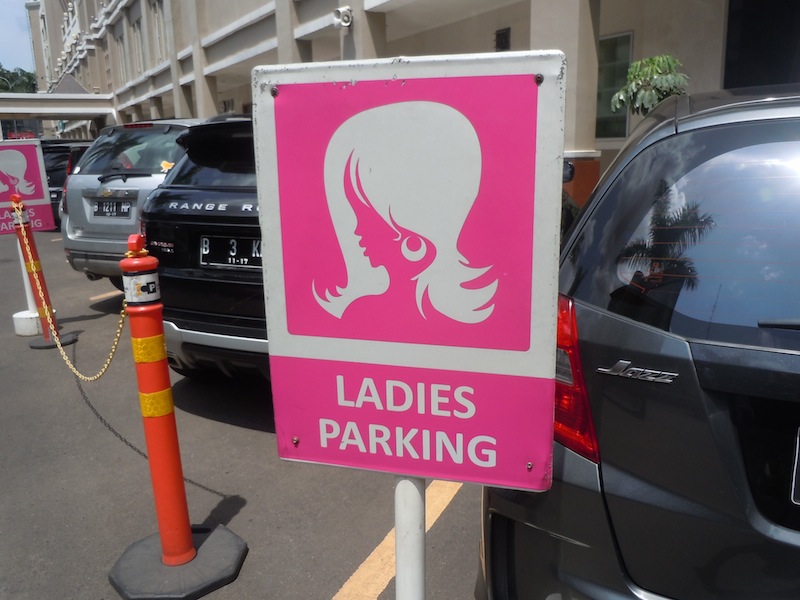
Claudiaexpat lives in Jakarta, and in this article she shares everything she has discovered about public transportation in her host city.
Last updated: September 2017
Traffic
Drivers and Driving
Taxis
Bajai and Ojek
Buses
Traffic
Let’s start with the traffic. The first Indonesian word you will learn is macet. It means traffic jam. It is an important word because the macet is very present in your everyday life in Jakarta.
I drove in Khartoum, Lubango, Brazzaville and Bissau, I sped along the roads of Tegucigalpa and Lima, not to mention Jerusalem, but I never felt as overwhelmed as I do here, when I look at the huge, unimaginable number of motorbikes that clog the streets of the Indonesian capital. There are so many that no rules apply to them any more.
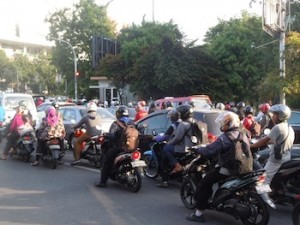 Just like in Holland where the bicycles are always right, motorbikes here feel the right to cut in front of you, invade the opposite lane, take one-way streets the wrong way, and occasionally ride on sidewalks. You find them everywhere – in front, behind, on the left, on the right, and riding every which way. I wouldn’t be surprised if one fell on my car roof.
Just like in Holland where the bicycles are always right, motorbikes here feel the right to cut in front of you, invade the opposite lane, take one-way streets the wrong way, and occasionally ride on sidewalks. You find them everywhere – in front, behind, on the left, on the right, and riding every which way. I wouldn’t be surprised if one fell on my car roof.
These indomitable drivers are skilled, and even though they cause you six heart attacks per day by almost touching the side of your car or suddenly materializing in front of you when you are not expecting them, collisions are rare. They are, however, a great source of stress for those with fragile nerves. Especially because for people like me, who have always driven on the right, the disproportionate number of motorbikes is an added challenge to learning how to drive the other way around. I am told this is not that difficult, you get used to it quickly, and anyway this is nothing compared to the risks you face when you are in the driving seat in Jakarta. These include:
- The police: this is one of the elements that never fails to come up in discussions about driving in Jakarta. It seems they use any excuse to stop you, and always find a reason to fine you – this includes not having the right driving licence (see below). A friend of mine, who is one of the rare brave souls I have met so far who drives her own car, carries an almost empty wallet with her, and keeps her money safely stored in a hidden pocket, so that if police stop her and ask her to compensate for whatever fault they have found, at least she won’t lose all her money! To be honest, though, I must tell you that me and my husband were recently stopped by a policeman who had all the reasons in the world (because we were driving our car on a day when it could not circulate), and that after smiles and jokes let us go (without any money involved).
- Accidents: I haven’t seen any so far, but I know they happen, some of them very serious. Given the heavy traffic, it is reasonable to reckon that one day or another you could find yourself in an unpleasant situation. Here versions vary, from the most apocalyptic descriptions of people lynched on the spot or robbed of all of their goods, to those (that I honestly find more realistic) where you always manage to settle things somehow. You certainly can’t rely on insurance. When we asked to take out insurance for our new car, the salesman was surprised and asked why we wanted it.
- The rain: driving in Jakarta is challenging in itself, but it is even more so when it rains. Because rain here is not simply rain: it’s buckets that pour directly on cars, motorbikes, pedestrians, that flood whole neighbourhoods. Everything is stuck and there is no hope. You just need to be patient and bring a pastime with you.
Drivers and Driving
Most people have a driver, he is an integral part of life in Jakarta. An average salary for a driver starts from 3 million rupees (200 euros) for a 10-hour day, plus overtime. Drivers are found via word of mouth: there are mailing lists, forums and expat associations with lots of offers, and with the coming and going of expats in Jakarta, you can always find a very good driver when you need one.
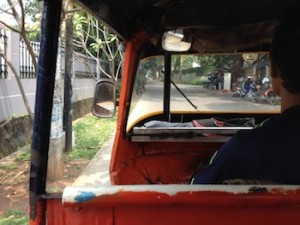 A good driver must not only be able to drive well and cautiously, but know the city thoroughly, its shortcuts and the places to avoid. Many drivers speak English, but not all. Their tasks go beyond taking you and waiting for you anywhere you want to go; they often run small errands for you, deliver parcels, shop for you, and, like everything in this country, they can become an important channel between you and the local culture. Obviously you (or your office or organization) will have to provide the car, which your driver will keep clean and well-maintained.
A good driver must not only be able to drive well and cautiously, but know the city thoroughly, its shortcuts and the places to avoid. Many drivers speak English, but not all. Their tasks go beyond taking you and waiting for you anywhere you want to go; they often run small errands for you, deliver parcels, shop for you, and, like everything in this country, they can become an important channel between you and the local culture. Obviously you (or your office or organization) will have to provide the car, which your driver will keep clean and well-maintained.
I personally have never had a driver and can’t see myself with one, but I understand the reasons of those who use one:
- you are more protected, don’t have to worry about accidents, police and so on
- you save time when moving around because drivers know the city much better than you do
- you can use the time spent in the car in creative ways: reading, writing, surfing the Internet, talking on the phone, and so on. I have seen perfectly equipped cars, with comfortable cushions, books, water bottles, all set up to face the long periods in the macet
- you give someone employment
I remain of the opinion that a driver is justified if you have to move around a lot. If you go out rarely, or always move in a specific area, employing a driver means having someone sitting at your home (even if you install him in the service area) waiting for you to make him work. And anyway in Jakarta taxis are wonderful (with a few exceptions, see below).
If you decide to drive your own car, you must have an Indonesian driving licence. You can drive with an international licence for the first six months (some say three, it’s not clear) after the your arrival in Indonesia. There are agents who can get one for you, though usually the company or organization you work for can guide you through the process. If not, you can contact me and I can give you the name of an efficient agent. The procedure is fast, you meet him at the main police station (he will explain exactly where it is), you give him your Kitas (Indonesian ID), passport and original driving licence, and he takes care of everything. He will call you to take a picture, then will give you your laminated Indonesian driving licence, which you’ll have to renew once a year. The cost is about 850,000 rupees (60 euros), a little bit less to renew it.
Please DO NOT LET IT EXPIRE. I did (because I was hospitalized in Singapore with a severe Dengue), and they now want me to do the test, both the theoretic one (in Bahasa, ahahahha) and the practical one, to issue a new driving licence.
Taxis
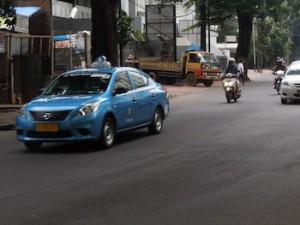 The most popular taxi company is BlueBird (https://www.bluebirdgroup.com/). They are efficient, have good cars, their drivers are respectful and drive well most of the time, and they are easy to spot. You can call them from home (the numbers are (021) 79171234/7941234, English spoken) or with the app that you can download on your phone or iPad. The first time you call they store your number and address, so that the next time you’ll just need to give your phone number, and they will know where to collect you: it is very practical. If you call them from outside home, give them the address you want to be picked up at and they’ll send you the taxi code on your mobile.
The most popular taxi company is BlueBird (https://www.bluebirdgroup.com/). They are efficient, have good cars, their drivers are respectful and drive well most of the time, and they are easy to spot. You can call them from home (the numbers are (021) 79171234/7941234, English spoken) or with the app that you can download on your phone or iPad. The first time you call they store your number and address, so that the next time you’ll just need to give your phone number, and they will know where to collect you: it is very practical. If you call them from outside home, give them the address you want to be picked up at and they’ll send you the taxi code on your mobile.
You can also hail taxis in the street. There are tons of them, the whole city is dotted with blue cars. Some belong to the BlueBird group, some belong to other companies, for instance the Pusaka, which are a slightly lighter blue (they are fine, too). There are also SilverBirds, dark grey Mercedes, much more comfortable and more expensive at about double the price.
When you call a taxi from your phone or app, you have to pay a minimum fare of 40,000 rupees (almost 3 euros) regardless of what is indicated on the taximeter when you get to your destination. If you hail a taxi in the street, the taximeter starts at 7,500 rupees (50 cents). The starting fare is the same both for Blue and SilverBird, so one trick you can use if you don’t have to travel far is to call Silverbird to travel more comfortably.
Be careful of taxis you hail in the street: some are disguised as BlueBird, but are not. They are blue cars that look like BlueBirds, but don’t have the sticker all BlueBirds have on the inside of the door, and are more dilapidated. They are generally safe to take, but you can’t appeal to the company if something goes wrong.
There are other taxi companies but I can’t tell you much about them. I have not met a single person yet who uses anything other than BlueBird. You see white taxis around, and yellowish ones (rarer). I have occasionally hailed one, and had no problems, besides the fact that their cars are dirtier, and sometimes stink.
Anyway, all taxis are cheap.
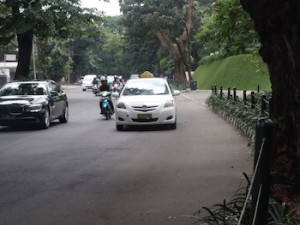 Now to the negative aspects: first of all, very few drivers know the whole city well. Often, if you give a slightly out-of-the-way address, they just cannot find it. It is always good to provide a few well-known landmarks, besides the name of the street and the numbers. Even then, though, you can find yourself trapped in a taxi that does not get you to your destination and whose driver insists on not asking for directions. Unfortunately there is not much you can do, except – if you are lucky and your driver speaks a bit of English or you master a bit of Bahasa – insist that he stops to ask.
Now to the negative aspects: first of all, very few drivers know the whole city well. Often, if you give a slightly out-of-the-way address, they just cannot find it. It is always good to provide a few well-known landmarks, besides the name of the street and the numbers. Even then, though, you can find yourself trapped in a taxi that does not get you to your destination and whose driver insists on not asking for directions. Unfortunately there is not much you can do, except – if you are lucky and your driver speaks a bit of English or you master a bit of Bahasa – insist that he stops to ask.
Another complication is the language; you might think that you pronounce the name of your destination correctly, but drivers don’t understand it. I have solved a lot of problems by writing down the address in big clear letters on a post-it. I hand it to the driver as soon as I get into the taxi.
The most depressing thing about taxis is that when it rains a lot, you simply can’t find them. And even if you call them a long time ahead (this also happens with BlueBird), there is no hope of getting one. Take this into account, and if you can, make alternative arrangements. It’s good to try not to lose your temper, since you can’t change anything anyway. After a while (from half an hour to four hours, depending on the quantity of rain) the situation goes back to normal, and everybody goes home.
Taxi companies suffer since Grab a Car (https://www.grab.com/my/car/) appeared in Jakarta. It works like anywhere else in the world, you just need to download the app and call a (private) car, which will collect you wherever you require. They cost half the price of taxis.
Bajai and ojek
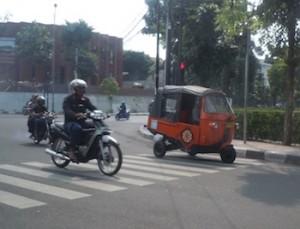 Other means of transportation in Jakarta include the bajai, which are engine-powered rickshaws, and the ojek. The bajai can be orange or blue. Orange ones are very noisy and pollute a lot (and have been banned from residential areas). The blue ones are more “ecological”: at least they are less noisy.
Other means of transportation in Jakarta include the bajai, which are engine-powered rickshaws, and the ojek. The bajai can be orange or blue. Orange ones are very noisy and pollute a lot (and have been banned from residential areas). The blue ones are more “ecological”: at least they are less noisy.
However, both are quite expensive – they cost as much if not more than taxis, and are rather dangerous because they are driven very badly, they invade the opposite lane and take bends at high speed. The ojek are simple motorbikes with a driver. They usually provide a helmet (it is forbidden to travel without one, and its use is anyway strongly recommended). All ojek parking spaces have a panel to help you identify them. I don’t know how expensive they are, but certainly less than a taxi. Both with ojek and banjai it is always better to agree on the cost of the travel before you start.
In any case, classical ojek have almost disappeared since the company Go-Jek (https://www.go-jek.com/) landed in Jakarta and upset the whole market. Gojek are simply ojek, but they are called through an app, that allows to check their route. They are well organized, have a uniform, and provide practical hairnets to apply before wearing the helmet. There are loads of them in town. An interesting feature of this company is that besides the mototaxi service, they offer other services, like food delivery, parcels delivery, delivery of your supermarket shopping. They even send you home someone to make you a massage, a make-up, clean around or wash your car.
Buses
As far as buses are concerned, there are many and generally quite run down. They are driven badly and it is hard to understand their route. I have met a couple of brave people who use them. A friend had identified the exact number that passed by her house, tried once, and saw it took a convenient route; another friend takes one occasionally, and stays on until the bus goes off on an unknown tangent which, at which point he gets off and takes a taxi. Buses are called Kopaja, and are painted different colours.
Last but not least, there if the Transjakarta, a bus that leaves from the central bus station at Block M (a popular mall in Jakarta) and takes you to the northeast part of the city (this is the one you take if you want to go and visit Kota, the old city). The advantage of Transjakarta is that it runs for most of the way in a preferential lane, so you save time. The ticket costs around 20,000 rupees, if I remember rightly (almost one and a half euro) – bring a coat because the air conditioning on board is criminal.
Nothing else comes to mind at the moment. I just want to invite you not to despair with the traffic. Somehow you get used to it, or you learn how to get organised. I invite you to read this blog post that I find fantastic, but don’t let it put you off: it’s all true, but it shows that in the end it’s also possible to laugh about it all.
Claudiaexpat (Claudia Landini)
Jakarta, Indonesia
February 2015
Photos of Claudiaexpat

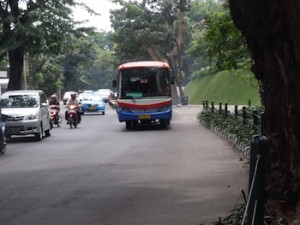

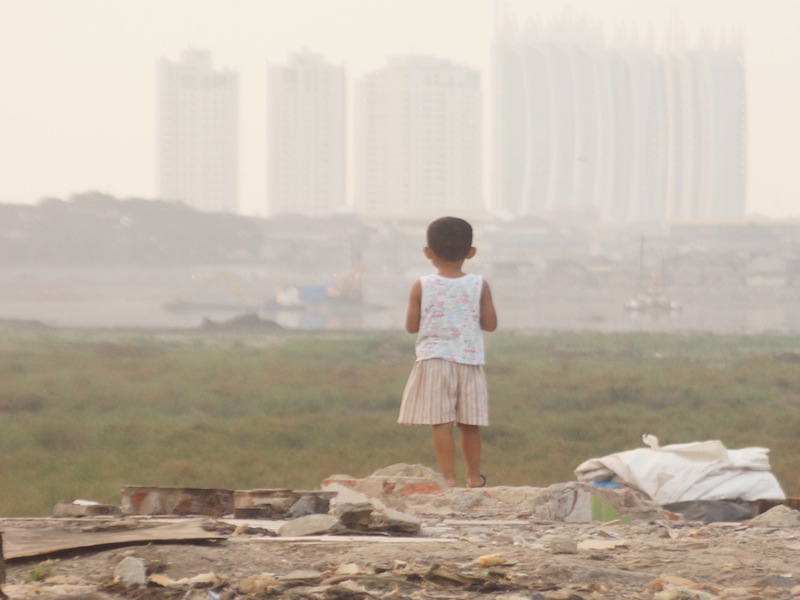
Very well explained ! Need some support for knowing house hunting and other things to keep in mind before relocating for a short time . Thanking you immensely